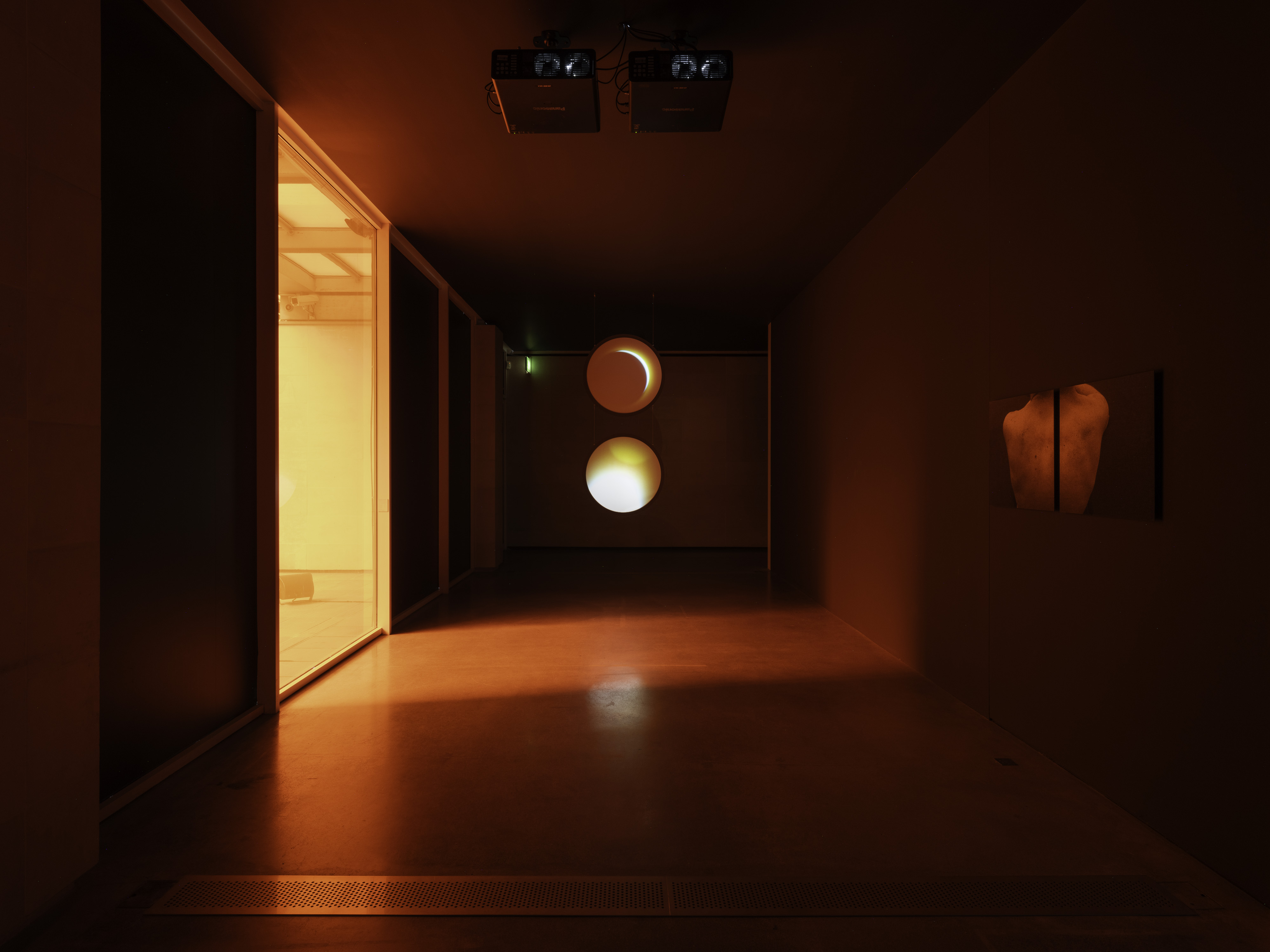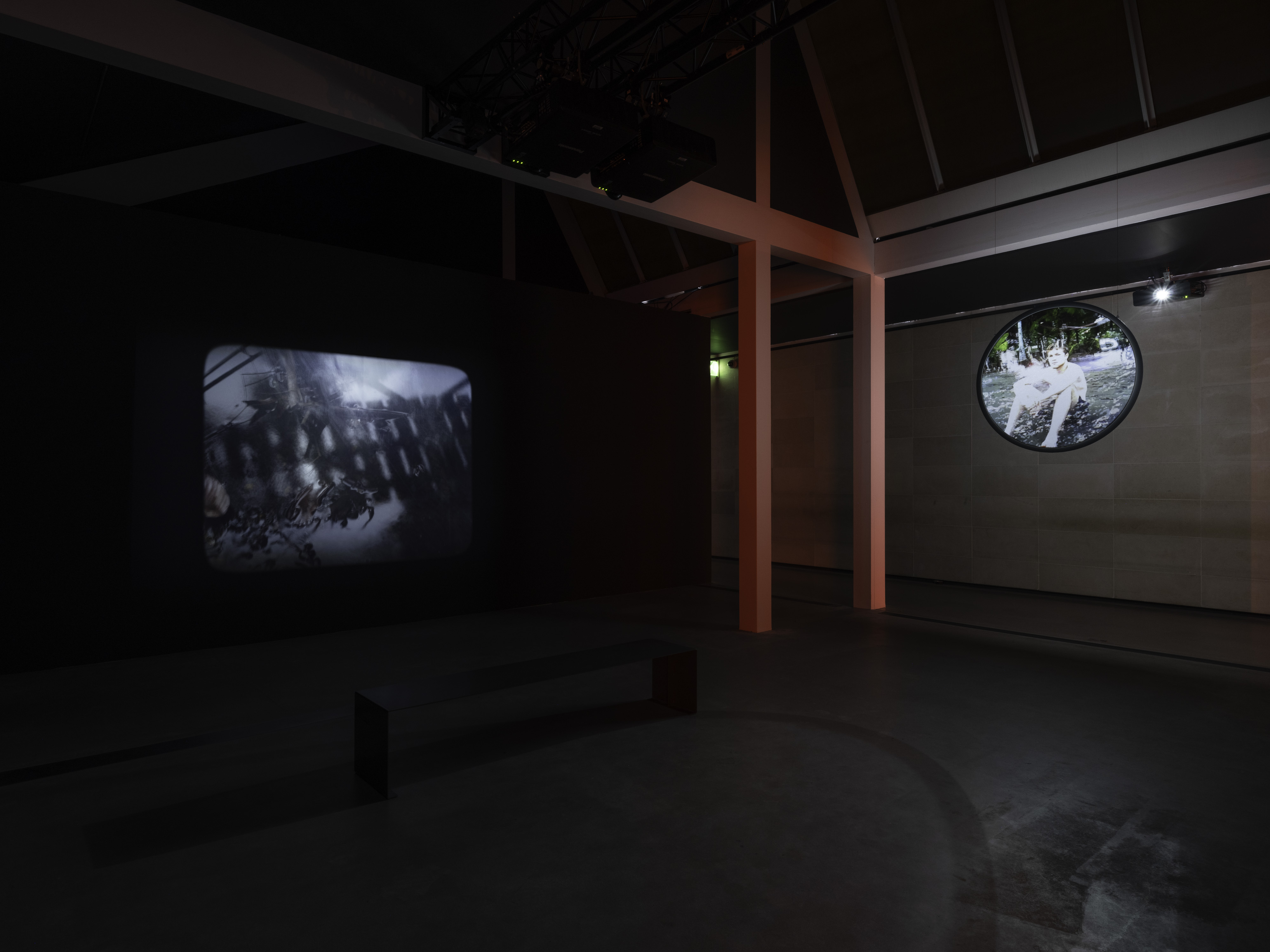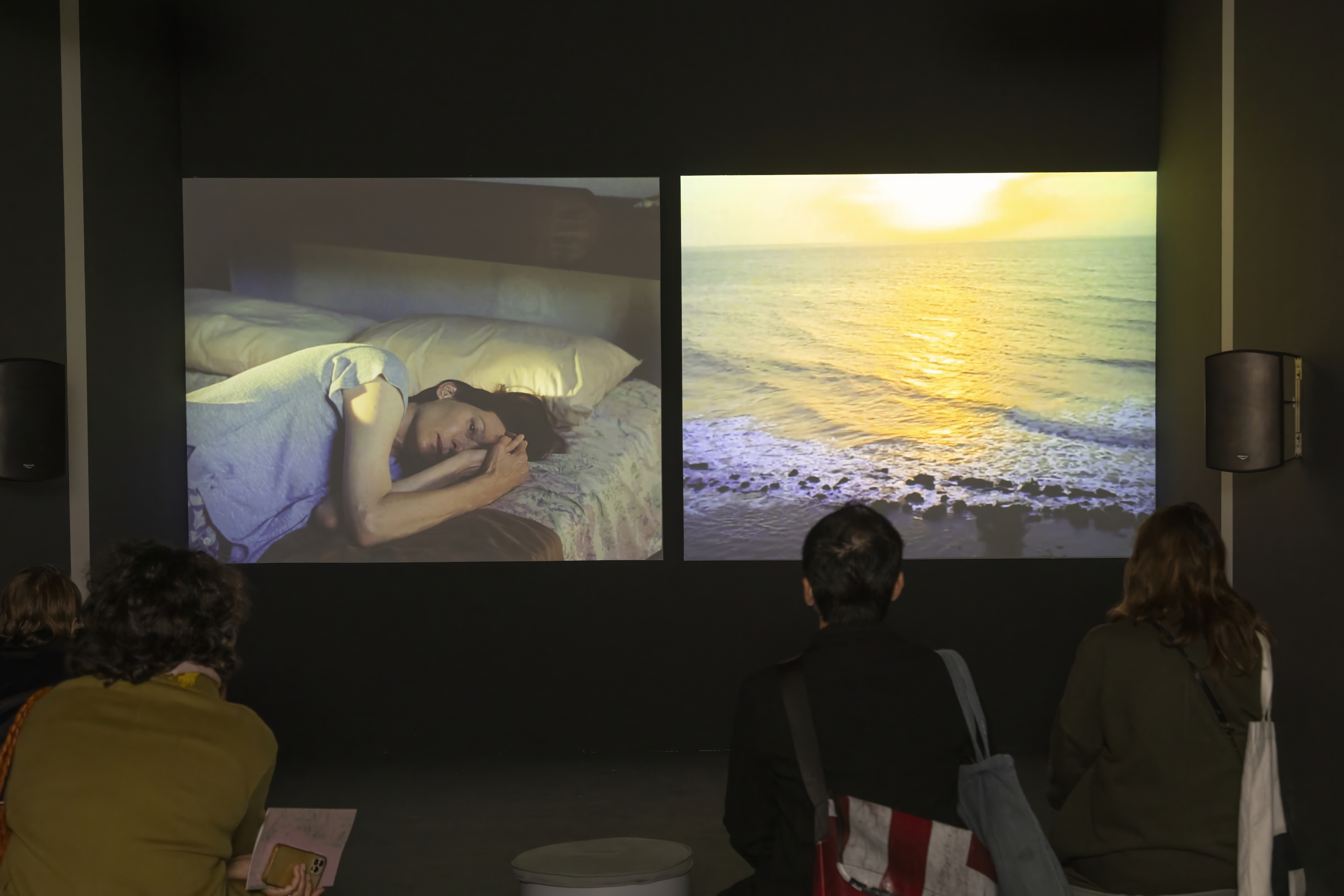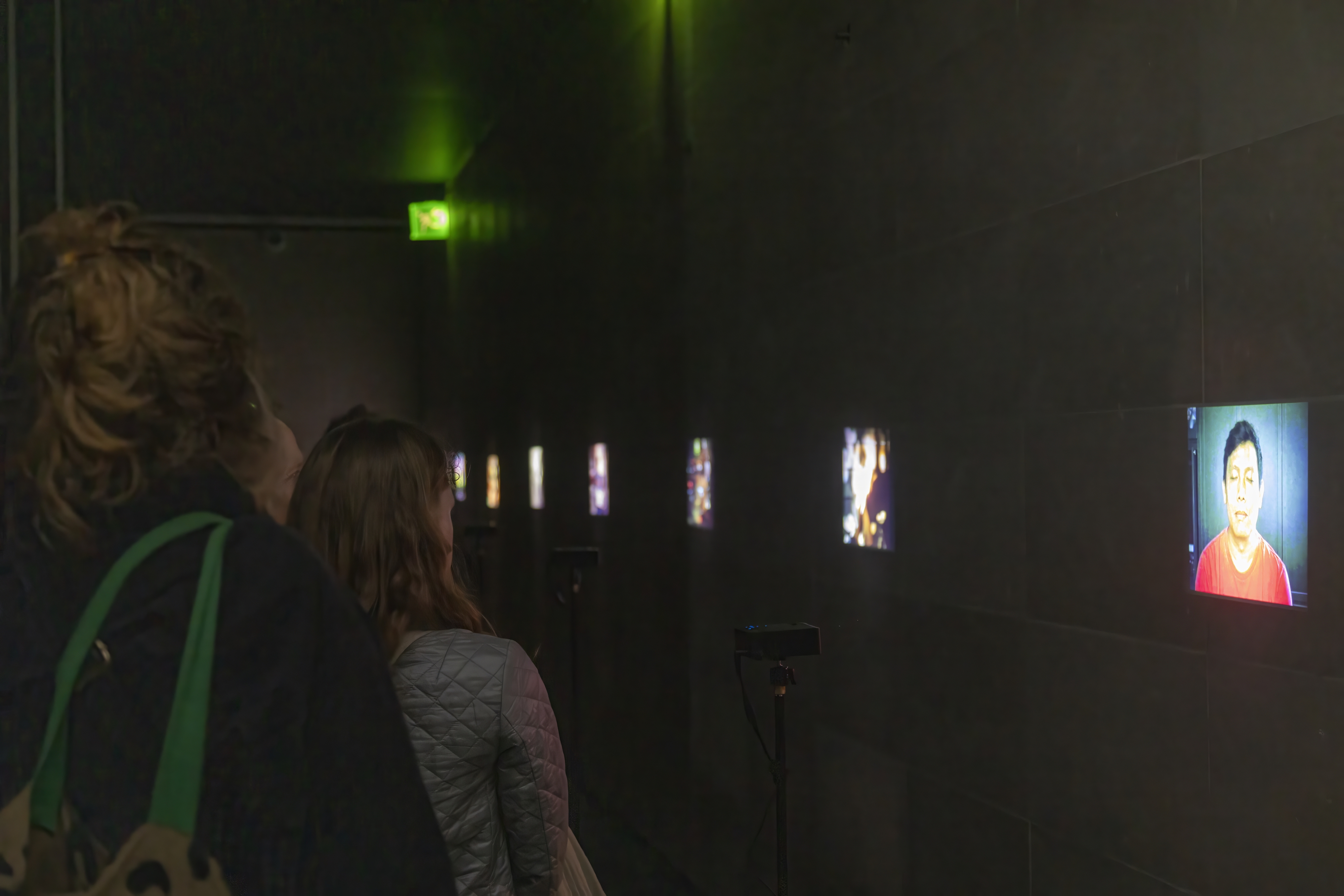Kiang Malingue is pleased to share Apichatpong Weerasethakul’s solo exhibition “Night Particle” at the Centre Pompidou. The exhibition has been specifically designed for a very special locale, a pavilion originally built to house the reproduction of sculptor Constantin Brancusi’s studio, now emptied for the renovation works at the Centre Pompidou. It was built to embrace the sunshine, but Weerasethakul has turned it into a night haunt, with light emanating only from screened images.
“Voir / n’est pas voir” (“Seeing / is not seeing”): these handwritten words are repeated like a jingle in Seeing Circles (2022), in which the artist describes vision trembling. Recalling the shutter of an analogue camera, the eye intermittently explores multiple scales of the visible world looking out from its standpoint. In For Bruce (2022), shot in the Peruvian outdoors, the same eye contemplates the undulations and reflections of the sun on the water, revealing at once the instant simplicity and complexity in looking / seeing, and maybe meditation. As with Brancusi’s studies of sunshine and natural shapes, the recent works brought together for this exhibition flow variously, from the shimmering of the Amazon sun to meanderings in the night. Like the palimpsest of a dream, the images they draw on form then dissipate, taking leave yet without fully disappearing: they transform to move on elsewhere. The realities of the present remain inseparable from vernacular myths and memories. As visitors move between the illuminations, they see frontiers in time dissolve.
In Solarium (2023), an installation recently created for the Thailand Biennale, Chiang Rai, Apichatpong Weerasethakul’s hypnagogic investigation achieves a hallucinatory realism, imagining an orphaned, wandering vision turning its quest onto itself. The sun of memory rises and sets on the horizon. It only remains for the pupil to invent another light.
— Courtesy of Centre Pompidou
Night Particle Apichatpong Weerasethakul

“Night Particle”, Brancusi’s studio, Centre Pompidou, Paris, 2024.
Image courtesy of Centre Pompidou, photo by Audrey Laurans.

“Night Particle”, Brancusi’s studio, Centre Pompidou, Paris, 2024.
Image courtesy of Centre Pompidou, photo by Hervé Véronèse.

“Night Particle”, Brancusi’s studio, Centre Pompidou, Paris, 2024.
Image courtesy of Centre Pompidou, photo by Audrey Laurans.

“Night Particle”, Brancusi’s studio, Centre Pompidou, Paris, 2024.
Image courtesy of Centre Pompidou, photo by Audrey Laurans.

“Night Particle”, Brancusi’s studio, Centre Pompidou, Paris, 2024.
Image courtesy of Centre Pompidou, photo by Hervé Véronèse.

“Night Particle”, Brancusi’s studio, Centre Pompidou, Paris, 2024.
Image courtesy of Centre Pompidou, photo by Audrey Laurans.

“Night Particle”, Brancusi’s studio, Centre Pompidou, Paris, 2024.
Image courtesy of Centre Pompidou, photo by Hervé Véronèse.

“Night Particle”, Brancusi’s studio, Centre Pompidou, Paris, 2024.
Image courtesy of Centre Pompidou, photo by Hervé Véronèse.